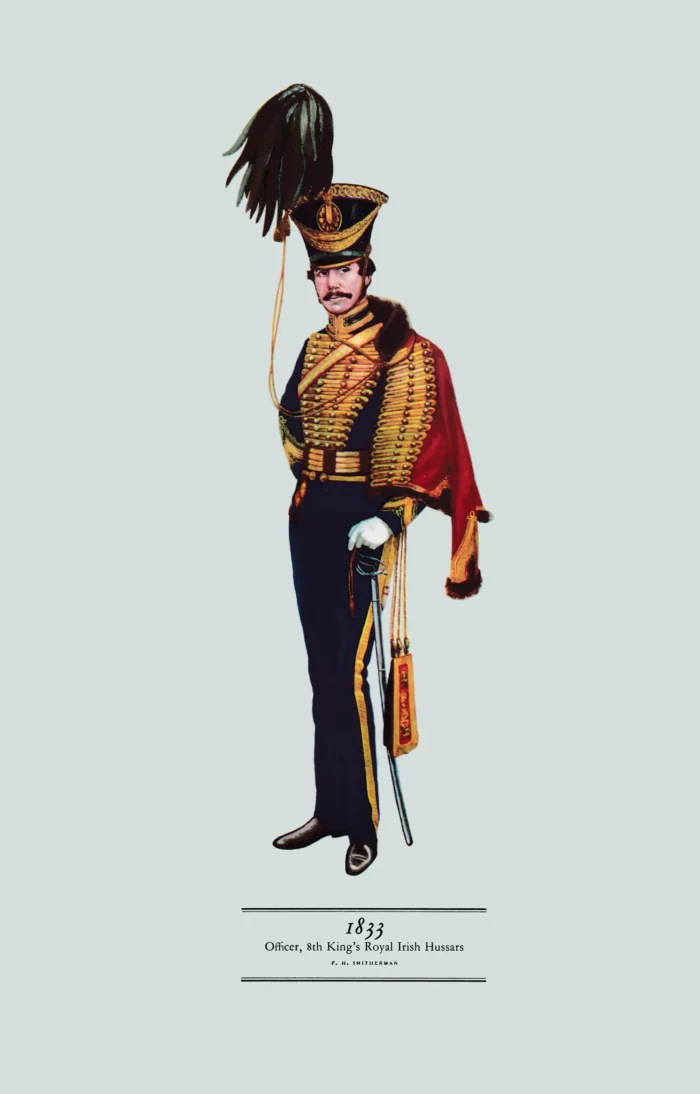Officer, 8th King’s Royal Irish Hussars, 1833 (Queen’s Royal Hussars)
£20.00
Raised 1693; from 1921 8th King’s Royal Irish Hussars; from 1992 Queen’s Royal Hussars – QRL (scroll down for a more detailed Description)
Published 1962 by © Hugh Evelyn Limited; drawn by Colonel Philip Henry Smitherman (1910-1982), Royal Corps of Signals
Size: c. 24 x 37cm [9 ½ ″ x 14 ½ ″] (may vary slightly from printers’ cut 50 years ago)
Printed on on medium cardstock weighing 144 g/sm2 faced in light greyish blue (RGB c. d5dede)
Print is STANDARD size – shipping is the same for 1 to 10 prints (based on largest print size in your order) – see Shipping & Returns
In stock
Description
The regiment was first raised by Henry Conyngham in Derry, becoming, in 1776, the King’s Royal Irish Regiment of Light Dragoons, and Hussars in 1822, now part of the Queen’s Royal Hussars. The Hussar busby has gone, replaced by a bell-topped shako heavily ornamented with gold lace and carrying a plume of black swan’s feathers. This shako disappeared after 1841 and was finally replaced by the busby, which continued as the Hussar headdress until full dress finally died. The pelisse is scarlet, the favourite colour of William IV, who ordered the change from blue. He also changed the lace silver to gold. As the 8th only changed from gold to silver in 1822, and the uniform cost between £300 and £400, these changes to suit the royal fancy were very expensive for officers. The coat and pelisse carry one hundred and fifty buttons between them. The troopers’ uniforms were the same except with yellow instead of gold lace. They carried a carbine hung from a swivel on a shoulder belt. This was the dress worn by the regiment in the charge of the Light Brigade at Balaclava, with busby and blue pelisse instead of a shako and red pelisse. The vessel carrying their blue pelisses was lost en route for the Crimea. In 1710 regiments of Horse wore swords hung from a shoulder belt, while Dragoons wore them slung from a waist belt. In that year, at Saragossa, the 8th destroyed a regiment of Spanish cavalry, took their belts and wore them slung over their shoulders. They continued as a privilege-often contested by the regiments of Horse, to wear this extra belt until 1776, earning the nickname of the ‘Cross Belts’.
Additional information
| Dimensions | 24 × 37.5 cm |
|---|





